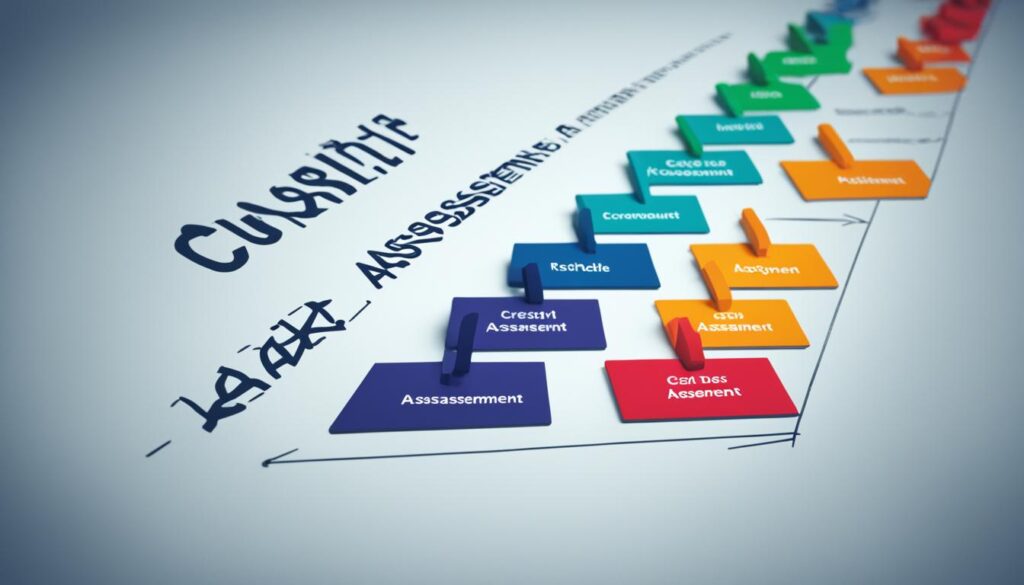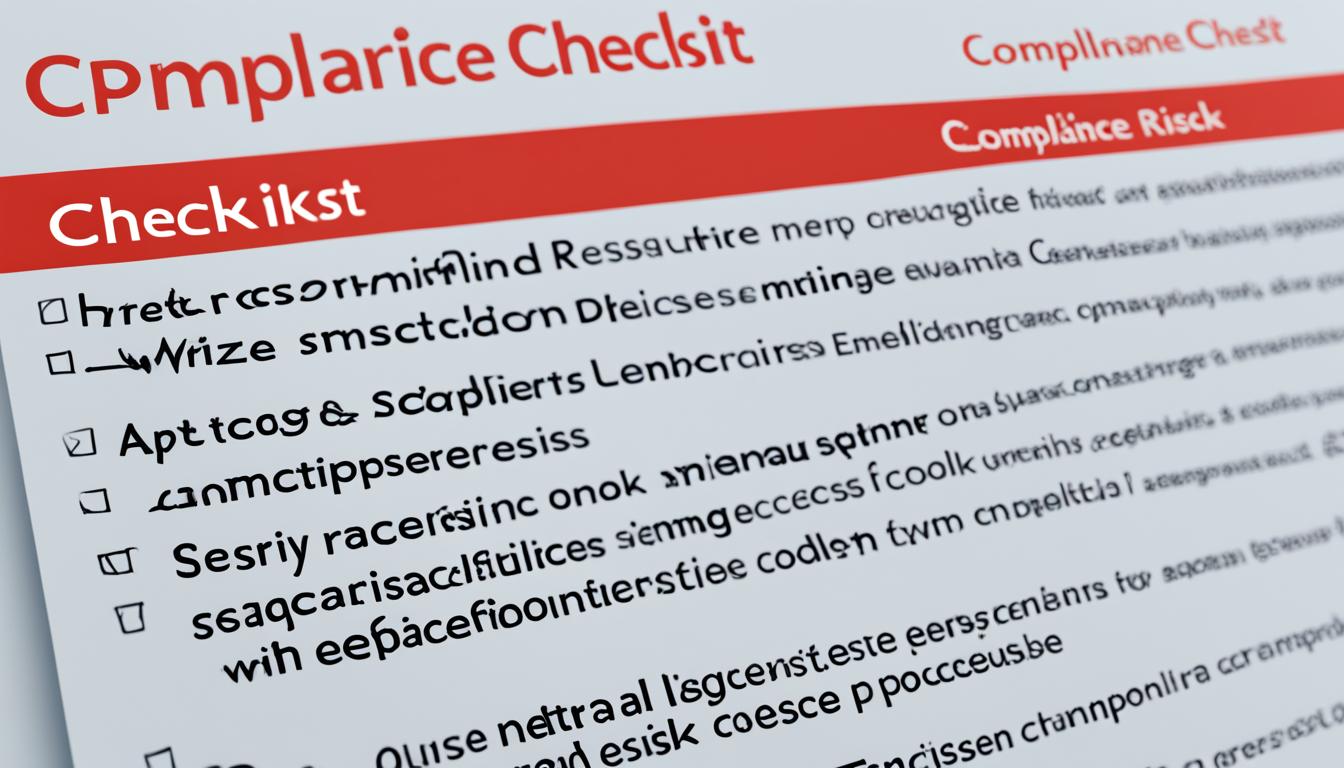Making SP800-37 Accessible to Medium-Sized Enterprises
Understanding and implementing the SP800-37 compliance requirements can be a daunting task for medium-sized enterprises. The NIST SP800-37 framework provides guidelines for applying the risk management framework to federal information systems, but its complexity may seem overwhelming. As experts in cybersecurity, we understand the challenges faced by medium-sized enterprises and aim to simplify the process for you. In this article, we’ll break down the NIST SP800-37 standards and provide actionable insights on how you can navigate the framework and achieve compliance. Let’s get started.
As a cybersecurity professional with years of experience working with various organizations, I’ve witnessed the struggles that medium-sized enterprises face when it comes to implementing the NIST SP800-37 framework. Through knowledge of industry best practices and firsthand experience, I can offer unique insights and practical advice on how to simplify the compliance process and make it more accessible for businesses of your size.
In this article, we will cover:
- An overview of the NIST SP800-37 framework and its importance for medium-sized enterprises
- The components of the NIST Cybersecurity Framework and how they contribute to enhancing security
- The role of risk assessment in cybersecurity and how to effectively conduct one
- Guidelines and best practices for scoping a cybersecurity risk assessment
- The importance of ongoing risk assessment and adaptation in today’s evolving threat landscape
- The significance of collaboration and communication in the risk assessment process
- How to make risk assessment actionable and integrated into decision-making processes
- Key takeaways and next steps for implementing the NIST SP800-37 framework in your organization
What is NIST?
The National Institute for Standards and Technology (NIST) is a government agency established in 1901. We are dedicated to developing standards and guidelines that ensure the competitiveness of the United States in various sectors, including computer science and cybersecurity.
As a leader in technology and innovation, NIST plays a pivotal role in promoting the advancement of cybersecurity practices. Our mission is to provide organizations with the necessary tools and resources to protect their critical infrastructure and secure their digital assets.
One of our significant contributions to the cybersecurity landscape is the creation of the NIST Cybersecurity Framework. This framework applies to all critical infrastructure sectors and serves as a comprehensive guide for organizations to align their cybersecurity policies, business practices, and technological approaches.
The NIST Cybersecurity Framework is designed to help organizations understand, manage, and mitigate cybersecurity risks effectively. By adopting this framework, organizations can enhance their security posture and establish a strong foundation for protecting sensitive data and information.
At NIST, we recognize the importance of collaboration and knowledge-sharing in the cybersecurity community. We strive to foster partnerships, engage stakeholders, and share best practices to build a resilient and secure digital ecosystem.
Through our ongoing research, development, and dissemination of standards and guidelines, NIST remains at the forefront of cybersecurity innovation, ensuring the United States maintains its leadership in the digital age.
Understanding the NIST Cybersecurity Framework
The NIST Cybersecurity Framework, also known as the Framework for Improving Critical Infrastructure Cybersecurity, was developed in response to an executive order signed by President Obama in 2013. This framework provides organizations with strategies to develop a robust security posture by identifying, protecting, detecting, responding to, and recovering from cybersecurity incidents. It aims to align policy, business, and technological approaches while prioritizing risk and flexibility.
By implementing the NIST Cybersecurity Framework, organizations can enhance their security posture and strengthen their defenses against cyber threats. This framework serves as a roadmap for organizations to assess and mitigate risks, ensuring the protection of assets and the continuity of operations.
Key Components
The NIST Cybersecurity Framework comprises three key components: the Core, Profiles, and Implementation Tiers.
- The Core: This component provides a set of cybersecurity activities and outcomes that organizations can use as a foundation for their security programs. It consists of five main functions: Identify, Protect, Detect, Respond, and Recover. Each function is further divided into categories and subcategories that guide organizations in developing specific security measures and controls.
- Profiles: Profiles enable organizations to align their cybersecurity requirements with their business objectives, risk tolerance, and available resources. By defining a profile, organizations can identify the desired cybersecurity outcomes and prioritize the implementation of security controls.
- Implementation Tiers: The Implementation Tiers help organizations assess their current security practices and determine their desired state of cybersecurity risk management. These tiers range from Partial to Adaptive, reflecting increasing levels of maturity and integration of cybersecurity practices.
Organizations can use the NIST Cybersecurity Framework as a guide to develop customized cybersecurity programs tailored to their specific needs. By leveraging this framework, organizations can establish a proactive and comprehensive approach to risk management, ensuring the protection of sensitive information and maintaining the trust of their customers and stakeholders.
| Benefits of the NIST Cybersecurity Framework | Challenges Addressed |
|---|---|
| Enhanced security posture | Identifying and prioritizing cybersecurity risks |
| Improved incident response and recovery capabilities | Aligning policy, business, and technological approaches |
| Efficient allocation of cybersecurity resources | Implementing effective security measures |
| Enhanced collaboration and communication | Promoting risk-based decision-making |
The Components of the Framework
In order to effectively implement the NIST Cybersecurity Framework, it is essential to understand its key components: The Core, the Profiles, and the Implementation Tiers.
The Core
The Core is the foundation of the NIST Cybersecurity Framework. It encompasses the five main functions: Identify, Protect, Detect, Respond, and Recover. Each function represents a set of activities and outcomes that organizations should strive to achieve in order to develop a comprehensive security program.
The Core serves as a guide, providing organizations with a framework to assess their current security posture, identify potential gaps, and prioritize their cybersecurity efforts. By leveraging the Core, organizations can establish a solid foundation for their cybersecurity program and align their security goals with industry best practices.
The Profiles
The Profiles component of the NIST Cybersecurity Framework allows organizations to tailor the framework to their specific risk appetite, resources, and business requirements. A Profile represents the desired cybersecurity outcomes of an organization and serves as a roadmap for aligning their security objectives with the Core functions.
By creating a Profile, organizations can identify the specific activities and cybersecurity controls that are most relevant to their operations. This customization enables organizations to allocate their resources effectively and focus on the areas that have the greatest impact on their overall security posture.
The Implementation Tiers
The Implementation Tiers component assists organizations in determining their risk management style and assessing their current level of integration and participation in cybersecurity activities. It provides a framework for organizations to evaluate their existing cybersecurity practices and identify areas for improvement.
There are four Implementation Tiers: Partial, Risk-Informed, Repeatable, and Adaptive. Each tier represents a different level of cybersecurity maturity and provides organizations with a roadmap for advancing their cybersecurity capabilities over time.
The Implementation Tiers enable organizations to gain insights into their current cybersecurity practices and identify the necessary steps to enhance their security posture. By aligning their cybersecurity efforts with the appropriate Implementation Tier, organizations can prioritize their investments and continuously improve their cybersecurity resilience.
| Component | Description |
|---|---|
| The Core | Encompasses the five main functions: Identify, Protect, Detect, Respond, and Recover |
| The Profiles | Allows customization of the framework to align with risk appetite, resources, and business requirements |
| The Implementation Tiers | Assists organizations in assessing their risk management style and level of integration in cybersecurity activities |
Importance of Risk Assessment in Cybersecurity
Cybersecurity risk assessments are a critical component of safeguarding organizations against potential threats. By identifying vulnerabilities and assessing risks, organizations can gain valuable insights into the potential impact of cybersecurity incidents. This understanding allows them to prioritize security measures, develop effective security plans, and enhance their overall risk management practices. Regular risk assessments provide a proactive approach to addressing vulnerabilities and mitigating potential threats before they lead to significant damage.
Benefits of Cybersecurity Risk Assessments
Risk assessments offer several key benefits to organizations:
- Identification of vulnerabilities: Risk assessments play a vital role in identifying weaknesses in an organization’s cybersecurity infrastructure. By thoroughly evaluating systems, networks, and software, organizations can understand potential entry points for attackers and take proactive steps towards strengthening their defenses.
- Assessment of risks: A thorough risk assessment helps organizations understand the level of risk associated with various vulnerabilities. This knowledge enables them to prioritize their security efforts, allocating resources where they are most needed and focusing on the risks that pose the greatest threats to their operations.
- Development of effective security plans: By conducting regular risk assessments, organizations can develop comprehensive security plans tailored to their specific needs. These plans encompass a range of measures, from implementing advanced security technologies to establishing robust incident response protocols.
- Enhanced risk management practices: Risk assessments provide organizations with valuable insights into their overall risk posture. By understanding their risk landscape, organizations can make informed decisions about risk acceptance, transfer, mitigation, or avoidance. This helps establish effective risk management practices that align with industry standards and regulatory requirements.
Overall, conducting regular cybersecurity risk assessments empowers organizations to take proactive steps towards reducing their vulnerabilities, enhancing their risk management processes, and fortifying their cybersecurity defenses.
Key Steps in a Cybersecurity Risk Assessment
| Step | Description |
|---|---|
| 1 | Identify assets and their value |
| 2 | Identify potential threats and vulnerabilities |
| 3 | Assess the likelihood and impact of risks |
| 4 | Calculate the risk level |
| 5 | Implement controls and safeguards |
| 6 | Document and communicate assessment findings |
| 7 | Monitor and review risks on an ongoing basis |
NIST Guidelines for Risk Assessment
When it comes to effectively managing cybersecurity risks, organizations can rely on the National Institute of Standards and Technology (NIST) for trustworthy guidelines. NIST provides comprehensive guidance on risk assessments through its Special Publication 800-30, which serves as a vital resource for assessing risks in federal information systems and organizations.
NIST SP 800-30 outlines the step-by-step process of conducting a risk assessment, ensuring organizations have a structured approach to identifying, evaluating, and mitigating potential risks. The guidelines cover three key stages: preparing for the assessment, conducting the assessment, and maintaining the assessment.
- Preparing for the assessment involves establishing the context and scope of the assessment, defining the risk assessment team, and identifying the necessary resources. Clear objectives and goals are set during this stage to ensure the assessment addresses the organization’s specific needs and requirements.
- Conducting the assessment involves collecting relevant data, analyzing threats and vulnerabilities, and assessing the potential impacts of cybersecurity incidents. NIST SP 800-30 provides valuable insights into information gathering techniques, risk identification methods, and qualitative and quantitative assessments.
- Maintaining the assessment emphasizes the importance of continuously monitoring and updating the risk assessment process. With the rapidly evolving threat landscape, organizations need to stay vigilant and adapt their risk management strategies accordingly. NIST SP 800-30 offers guidance on reassessing risks and maintaining an up-to-date risk profile.
NIST SP 800-30 complements other NIST publications, such as SP 800-39 and SP 800-53, which provide additional guidance on risk management and security controls. By adhering to these guidelines, organizations can enhance their risk management processes, strengthen their security posture, and effectively address potential vulnerabilities.
Scoping a Cybersecurity Risk Assessment

When scoping a cybersecurity risk assessment, we need to determine the extent of the assessment’s coverage. This includes identifying the scope of the assessment, organizational applicability, time frame, and architectural considerations.
The scope of a risk assessment should encompass the entire organization, including its assets, supply chain, and relationships. By conducting a comprehensive assessment, we can identify vulnerabilities and risks that may exist within our organization. This enables us to prioritize security measures and develop effective risk management strategies.
Organizational applicability is another crucial factor to consider when scoping a risk assessment. We need to assess the relevance and impact of cybersecurity risks on different departments, business units, and stakeholders. This ensures that all areas of the organization are included in the assessment, allowing us to address vulnerabilities and risks holistically.
Architectural considerations play a significant role in scoping a risk assessment. We need to examine the organization’s IT infrastructure, network architecture, and system configurations. Understanding the architecture helps us identify potential points of failures, security gaps, and vulnerabilities. This knowledge informs our risk assessment process and allows us to develop targeted security controls.
Key Considerations for Scoping a Cybersecurity Risk Assessment:
- Identify the scope and boundaries of the assessment
- Determine the organizational applicability of the assessment
- Evaluate the time frame for conducting the assessment
- Consider the architectural aspects of the organization
Ongoing Risk Assessment and Adaptation
In today’s ever-changing cybersecurity landscape, risk assessments must be an ongoing process that evolves alongside technological advancements, emerging threats, and the dynamic nature of organizational environments. To effectively manage cyber risks, organizations need to continuously review and update their risk management processes and security protocols.
Evolving risk assessment involves staying abreast of new technologies and understanding their potential impact on the organization’s risk profile. As new IT systems are introduced and existing ones evolve, it is essential to assess their vulnerabilities and adjust risk mitigation strategies accordingly.
Continuous monitoring plays a crucial role in the risk management process. Organizations should implement robust systems and tools to continually evaluate the risk landscape, enabling them to identify potential threats and vulnerabilities proactively. This real-time monitoring helps organizations take prompt action to strengthen their security posture and respond effectively to emerging risks.
Benefits of Evolving Risk Assessment and Continuous Monitoring
An ongoing risk assessment and continuous monitoring approach offer several advantages:
- Timely identification of new risks: By regularly assessing risks and monitoring the cybersecurity landscape, organizations can proactively identify and understand emerging risks, enabling them to implement appropriate measures promptly.
- Effective risk mitigation: Continuous monitoring provides real-time data on potential vulnerabilities and threats, allowing organizations to prioritize mitigation efforts based on the most significant risks.
- Adaptability to evolving technology: As technology evolves, new risks and vulnerabilities arise. Ongoing risk assessments ensure that organizations are equipped to address these challenges by adapting their risk management strategies accordingly.
- Compliance with regulatory requirements: Many regulatory frameworks, including NIST guidelines, expect organizations to maintain regular risk assessments and continuous monitoring. Adhering to these requirements helps organizations stay compliant and ensures a strong security posture.
By embracing evolving risk assessment and adopting a continuous monitoring approach, organizations can enhance their overall risk management process, improve their security posture, and effectively safeguard their critical assets.
Implementing a comprehensive risk management platform such as CyberStrong can streamline the ongoing risk assessment process. With its advanced capabilities, organizations can automate data collection, analysis, and reporting, enabling them to make informed decisions based on real-time insights.
Collaboration and Communication in Risk Assessment
Effective collaboration and communication are vital in conducting a successful risk assessment. At our organization, we understand the importance of stakeholder engagement, risk assessment communication, and information sharing to ensure comprehensive and accurate risk assessments.
When performing risk assessments, we actively engage key stakeholders, including mission/business owners, risk executives, and information system owners/program managers. Their expertise and insights provide valuable inputs to the risk assessment process, allowing us to gather relevant information and assess risks from multiple angles.
Regular communication plays a crucial role in the risk assessment process. By maintaining open lines of communication with stakeholders, we ensure that the assessment incorporates accurate and credible information. This communication not only helps us stay up to date with the latest developments in the organization but also fosters a collaborative environment necessary for effective risk management.
Information sharing is another critical aspect of risk assessment. By sharing relevant information, such as threat intelligence, vulnerability assessments, and incident reports, we create a knowledge-sharing culture. This sharing of information enables us to identify emerging risks, make informed decisions, and design targeted remediation plans.
Through stakeholder engagement, risk assessment communication, and information sharing, we create a comprehensive risk assessment process that aligns with industry best practices and regulatory requirements. This collaborative approach enables us to develop a thorough understanding of an organization’s risk landscape and establish effective risk mitigation strategies.
Overall, our commitment to collaboration and communication in risk assessment ensures that we provide our clients with accurate, actionable insights to enhance their cybersecurity posture.
Making Risk Assessment Actionable

The goal of a risk assessment is to make it actionable, understood, and integrated into the organization’s decision-making processes. By using a comprehensive risk management platform like CyberStrong, organizations can streamline the assessment process, align it with regulatory frameworks (including NIST guidelines), and prioritize risk mitigation based on real-time data. This ensures that risk assessments result in informed decisions and effective cybersecurity measures.
Here is a breakdown of how CyberStrong makes risk assessment actionable:
Streamlined Assessment Process
CyberStrong provides a user-friendly interface that simplifies the risk assessment process. Its intuitive design allows organizations to effortlessly navigate through the various stages of the assessment, ensuring a smooth and efficient experience.
Alignment with Regulatory Frameworks
With CyberStrong, organizations can seamlessly align their risk assessments with regulatory frameworks such as those outlined by NIST. The platform incorporates the necessary controls and guidelines, ensuring compliance and a comprehensive approach to risk management.
Prioritization of Risk Mitigation
CyberStrong enables organizations to prioritize risk mitigation based on real-time data. By utilizing advanced analytics and monitoring capabilities, the platform helps identify and assess high-risk areas, allowing for targeted mitigation efforts.
By leveraging the power of CyberStrong, organizations can transform risk assessments from mere evaluations to actionable plans that drive impactful cybersecurity measures. With real-time decision-making based on comprehensive risk assessment data, organizations can stay ahead of threats and protect their valuable assets.
| Benefits of CyberStrong for Actionable Risk Assessment |
|---|
| Streamlined assessment process for efficient risk evaluation |
| Alignment with regulatory frameworks, including NIST guidelines |
| Prioritization of risk mitigation based on real-time data |
| Enhanced decision-making through comprehensive risk assessment insights |
Conclusion
In conclusion, effective cybersecurity risk management is crucial for organizations to protect their assets and maintain a resilient cybersecurity posture. By following NIST guidelines and leveraging the NIST SP800-37 framework, organizations can streamline the risk assessment process and implement best practices to mitigate vulnerabilities.
Regular risk assessments are essential for identifying potential threats and assessing their impact on the organization. By conducting thorough risk assessments and understanding their risk landscape, organizations can prioritize security measures and develop proactive risk management strategies.
The NIST Cybersecurity Framework provides a comprehensive structure for organizations to align their cybersecurity policies, business practices, and technological approaches. By implementing the five functions outlined in the framework – Identify, Protect, Detect, Respond, and Recover – organizations can establish robust security controls and effectively respond to cybersecurity incidents.
By embracing risk assessment best practices, organizations can stay ahead of evolving cyber threats and adapt their risk management strategies accordingly. This includes continuous monitoring and evaluation of the risk landscape, as well as collaboration and communication with key stakeholders. By making risk assessment actionable and integrated into decision-making processes, organizations can make informed decisions and enhance their overall cybersecurity resilience.







